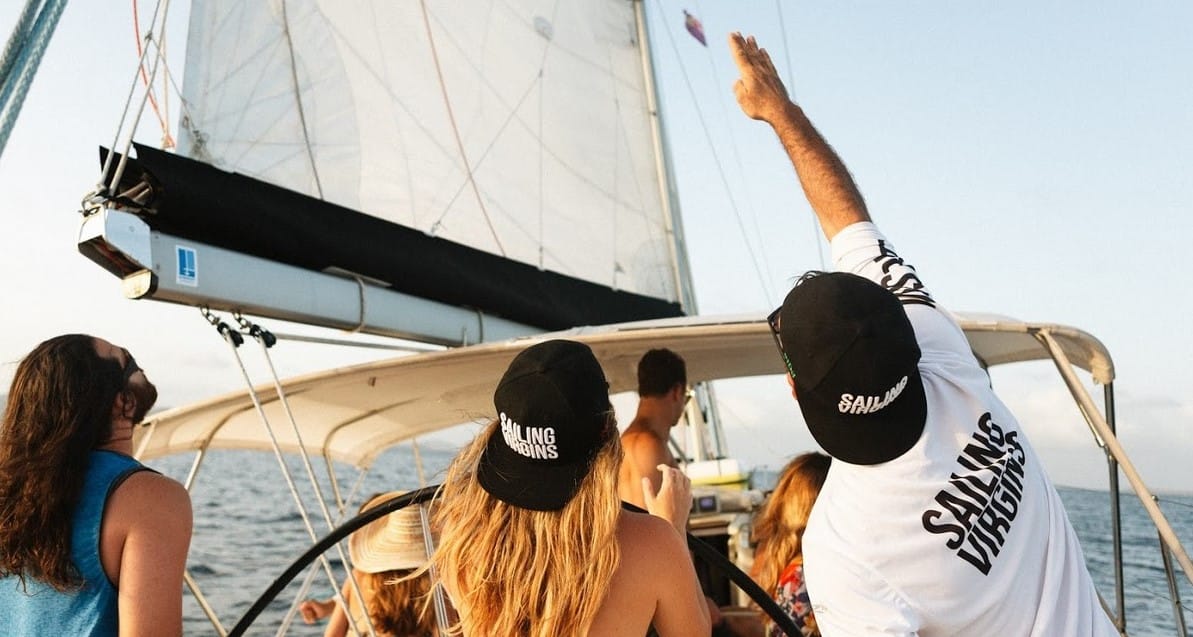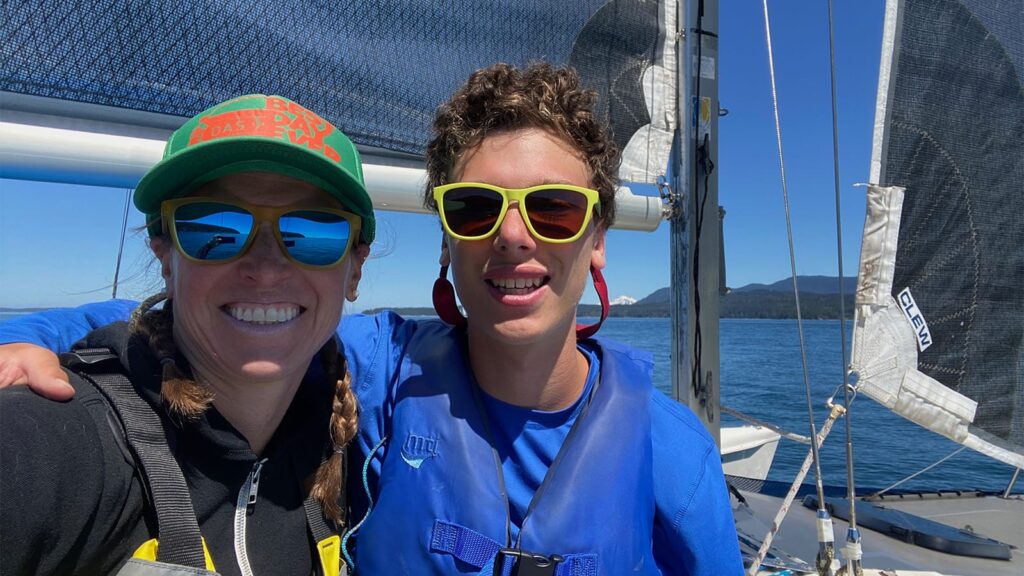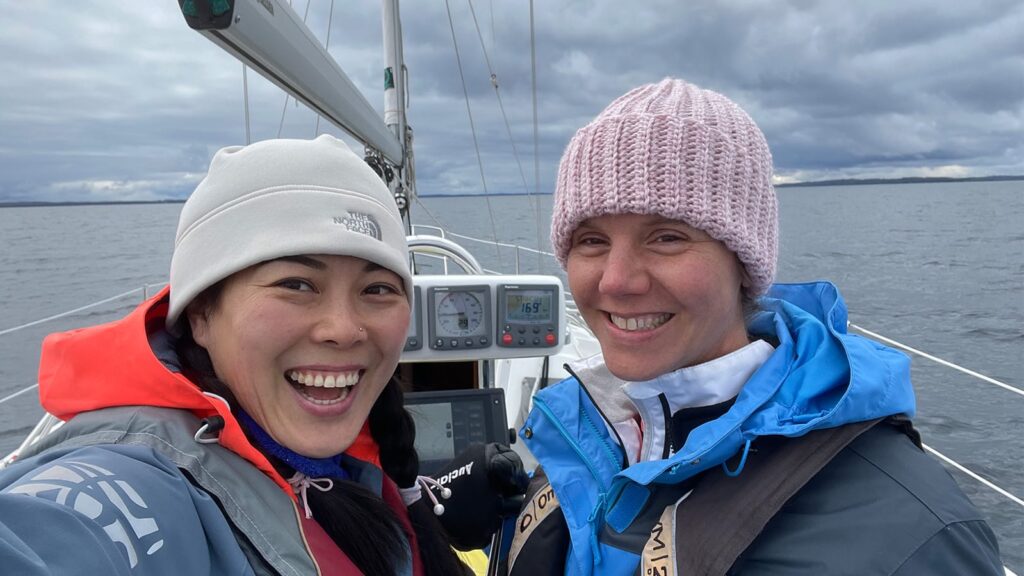 They say there is more than one way to skin a cat, and though they’re not referring to catamarans, the phrase still applies to sailing. There is more than one way to learn to do anything–so why do you need to take ASA sailing lessons? The answer is: You’ve got to learn somehow, so you may as well learn from the best.
They say there is more than one way to skin a cat, and though they’re not referring to catamarans, the phrase still applies to sailing. There is more than one way to learn to do anything–so why do you need to take ASA sailing lessons? The answer is: You’ve got to learn somehow, so you may as well learn from the best.
Some people are lucky enough to be raised on the water, and for them sailing comes as naturally as breathing. (Many of those people grow up to become ASA instructors, by the way.) For the rest of us, who weren’t so fortunate, a helping hand is needed and professional sailing lessons make the difference.
The Art of Sailing
- Understanding Points of Sail The direction of the wind dictates the direction a sailboat can sail. The Points of Sail describe the range of courses a sailboat can and cannot travel.
- Understanding the Sails The sail is the driving force of the boat. A sailboat is only as good as its sails when you consider that capturing the wind’s energy is the premise behind what sailors do to propel their boats in a forward direction.
- Understanding the Wind A sailor’s world revolves around the wind and staying aware of the wind’s direction is crucial. Your ability to accurately sense changes in the wind, its speed and its direction will improve as you learn.
We don’t believe that sailing has to be hard–that’s why our books are called Sailing Made Easy and Coastal Cruising Made Easy. But it is an artform, and to be a good sailor you need good training, just as writers, painters, and athletes require instruction and practice to reach their potential.

ASA sailing lessons are designed to establish confidence through a strong understanding of the fundamentals of sailing, starting with the basics: Understanding how the parts of the boat work, how to use the wind, how to steer, tie knots, and deal comfortably with problems that arise. From that strong platform of skills, you can go anywhere: For example, bareboat chartering in the tropics (ASA 104), or sailing out of sight of land with Offshore Passagemaking (ASA 108).
There are other ways to learn these skills. You could happen to have a friend who is a great sailor and has the spare time to teach you the ropes. You could teach yourself through trial and error (we strongly do not recommend this method), and some local clubs give lessons, although these certifications are unlikely to be recognized by charter companies or boat rentals.
We simply feel that none of these options offers what ASA does: expert instruction, a feeling of confidence, and membership in an association that supports you in the sailing lifestyle through benefits, events, flotillas, camaraderie, and more.
To see ASA lessons in action, watch this video of Bareboat Charter students sailing on our recent St. Martin flotilla. You’ll notice the instructor calmly coaching his students through the maneuvers–that comes from years of experience teaching the ASA curriculum. No panic, drama, or stress! Instead, the learning environment, even on the windy Caribbean Sea, is conducive to skillbuilding and retention.
Learning to Sail
- ASA 101: What You’ll Learn ASA 101 is your in troduction to Basic Keelboat Sailboat and is your key to a lifetime of sailing.
- How To Sail Sailing a boat is part art and part skill but few activities offer such a variety of pleasures as sailing. Something special occurs when you cast off the lines and leave your cares at the dock.
- 7 Tips For The Beginning Sailor There are the obvious things you need when you go sailing, sunscreen, a hat, a windbreaker, non-skid shoes, and wind. However, what do you really need to be ready to head out on the water?
- How To Learn To Sail You won’t have to buy a boat or learn a new language or buy a new wardrobe to get a taste for sailing. You can dictate how much you want to experience.
- Learning To Sail Is Just The Beginning Sailing means different things to different people. At ASA we understand that learning to sail is just the beginning of a relationship with a lifestyle that is infectious. Where will sailing take you? We have a few ideas but how you view sailing is the most important.
- What Is Your Role on a Boat? What type of sailor are you and what role do you take on the boat? Your ASA sailing education will prepare you to be a skipper on a sailing vessel and with that comes the responsibility of keeping your crew safe and ensuring the safety of the vessel you are sailing.
Do you really need sailing lessons? The simple answer, yes!








